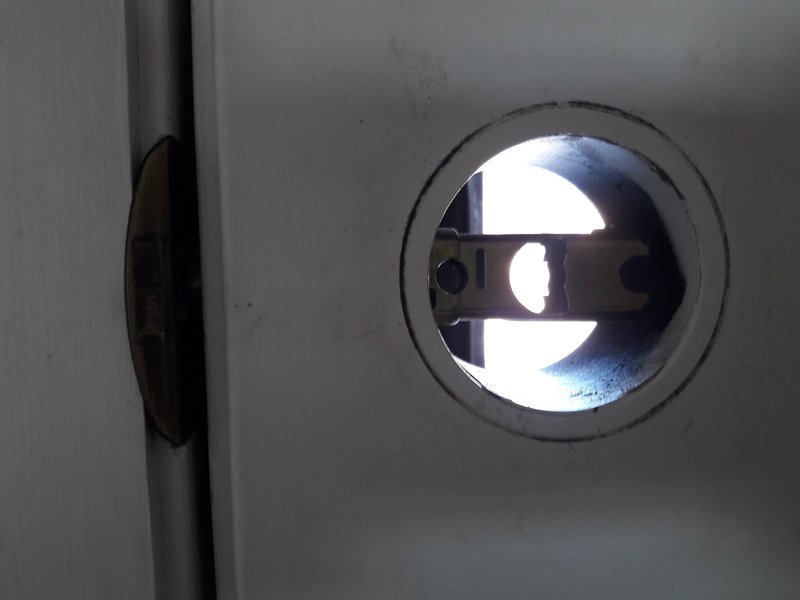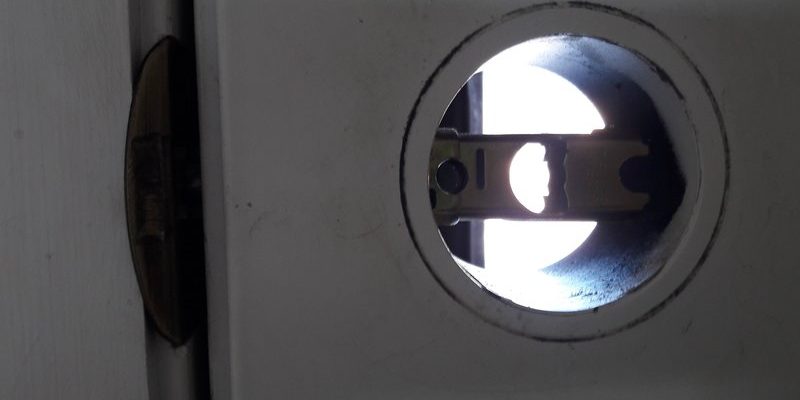
Think of the latch bolt as the lock’s little soldier, standing guard against unwanted entry. When it’s functioning well, it lets you in and out with ease. But when it gets stuck, it’s like that soldier went AWOL. With a bit of patience and the right approach, you can get that soldier back in line and your door working smoothly again. Let’s dive into how you can tackle this issue step by step.
Understanding the Latch Bolt Mechanism
Before we get our hands dirty, let’s break down what a latch bolt is and how it works. A latch bolt is a spring-loaded mechanism that slides into the door frame when the door is shut. It keeps the door securely closed but allows for easy opening when you turn the knob or handle.
You might be wondering why it gets stuck in the first place. There are a few common culprits. Dirt and grime can build up over time, making it difficult for the bolt to move freely. Misalignment can also be an issue, especially if the door has settled or shifted. Sometimes, simply a lack of lubrication can lead to a sticky situation. So, understanding how this mechanism works is crucial to diagnosing the problem.
Gather the Right Tools
To fix that stubborn latch bolt, you’re going to need a few tools. Don’t worry; these aren’t anything fancy. Here’s a quick shopping list:
- Flathead screwdriver
- Phillips screwdriver
- Lubricant spray (like WD-40 or silicone-based)**
- Clean cloth or paper towel
- Wooden dowel or shim if needed
Having these tools at your fingertips will make the process smoother. Honestly, if you can grab them before diving in, you’ll save yourself some back and forth. Now that you have your equipment ready, let’s start troubleshooting!
Identify the Problem
Before you launch into fixing the latch bolt, take a moment to observe. Is the door misaligned? Does it feel heavy when you try to close it? Pay attention to how the latch bolt behaves. Here are some common scenarios:
– Sticky Mechanism: If the latch bolt doesn’t retract fully when you turn the knob, it might just be gunked up with dirt or rust.
– Alignment Issues: If you notice gaps between the door and the frame or if the bolt doesn’t line up with the strike plate, you probably have an alignment issue.
– Broken Parts: In some cases, the bolt itself might be bent or broken, which would require replacement.
Taking a moment to identify the specific issue can save you time and effort down the road.
Cleaning the Latch Bolt
If dirt is the culprit, cleaning the latch bolt can often solve the problem. Here’s how to do it:
1. Remove the Cover Plate: Use a flathead screwdriver to pry off the cover plate around the latch if applicable.
2. Clean the Area: Wipe down the latch bolt and surrounding area with a clean cloth to remove any dust or debris.
3. Apply Lubricant: Spray a small amount of lubricant onto the latch bolt. Avoid overdoing it, as excess lubricant can attract more dirt.
Let the lubricant sit for a few minutes before testing the door. This simple cleaning process can work wonders!
Adjusting the Door Alignment
If you’ve noticed that the door isn’t lining up properly with the strike plate, adjustments might be needed. Here’s a step-by-step to get the door back in shape:
1. Loosen the Hinges: Start by using a Phillips screwdriver to loosen the screws on the door hinges slightly.
2. Shift the Door: Gently push the door either in or out to align it with the strike plate.
3. Tighten the Hinges: Once the door is aligned, tighten the screws back in place to secure it.
This realignment can help ensure that the latch bolt enters the strike plate correctly, preventing future sticking.
Testing the Latch Bolt
After cleaning and adjusting, it’s time to test your work. Close the door gently to see if the latch bolt engages smoothly. If it still sticks, you might want to repeat the cleaning process or check that your alignment is still solid. Sometimes, it takes a bit of tinkering to get everything just right.
It might feel a little tedious, but this hands-on work often brings rewarding results, especially when you finally hear that satisfying click of a properly functioning latch bolt.
When to Replace the Latch Bolt
If you’ve tried everything and the latch bolt still won’t cooperate, it might be time for a replacement. Here’s how to tell if that’s the case:
– Visible Damage: If you see any bent or broken parts, replacement is necessary.
– Persistent Issues: If cleaning and alignment don’t help, it’s a strong sign that the mechanism is worn out.
– Old Hardware: If the hardware is old or rusted, upgrading can provide smoother operation.
Replacing a latch bolt isn’t as complicated as it might sound. You typically just need to remove the screws, install the new bolt, and make sure everything lines up correctly.
Final Thoughts
Dealing with a stuck latch bolt can be annoying, but it’s a problem that you can fix with a little effort. By understanding how the latch bolt works, gathering the right tools, and following these steps, you’ll be able to get your door back to functioning smoothly. Honestly, there’s something satisfying about fixing these little home issues yourself. Plus, knowing how to perform basic troubleshooting can save you time and money in the long run.
Whether you’re cleaning, adjusting, or replacing, you’ve got this! With a little patience and persistence, you’ll have that door swinging freely in no time.
